This article may contain affiliate links, please read my affiliate disclosure for more information
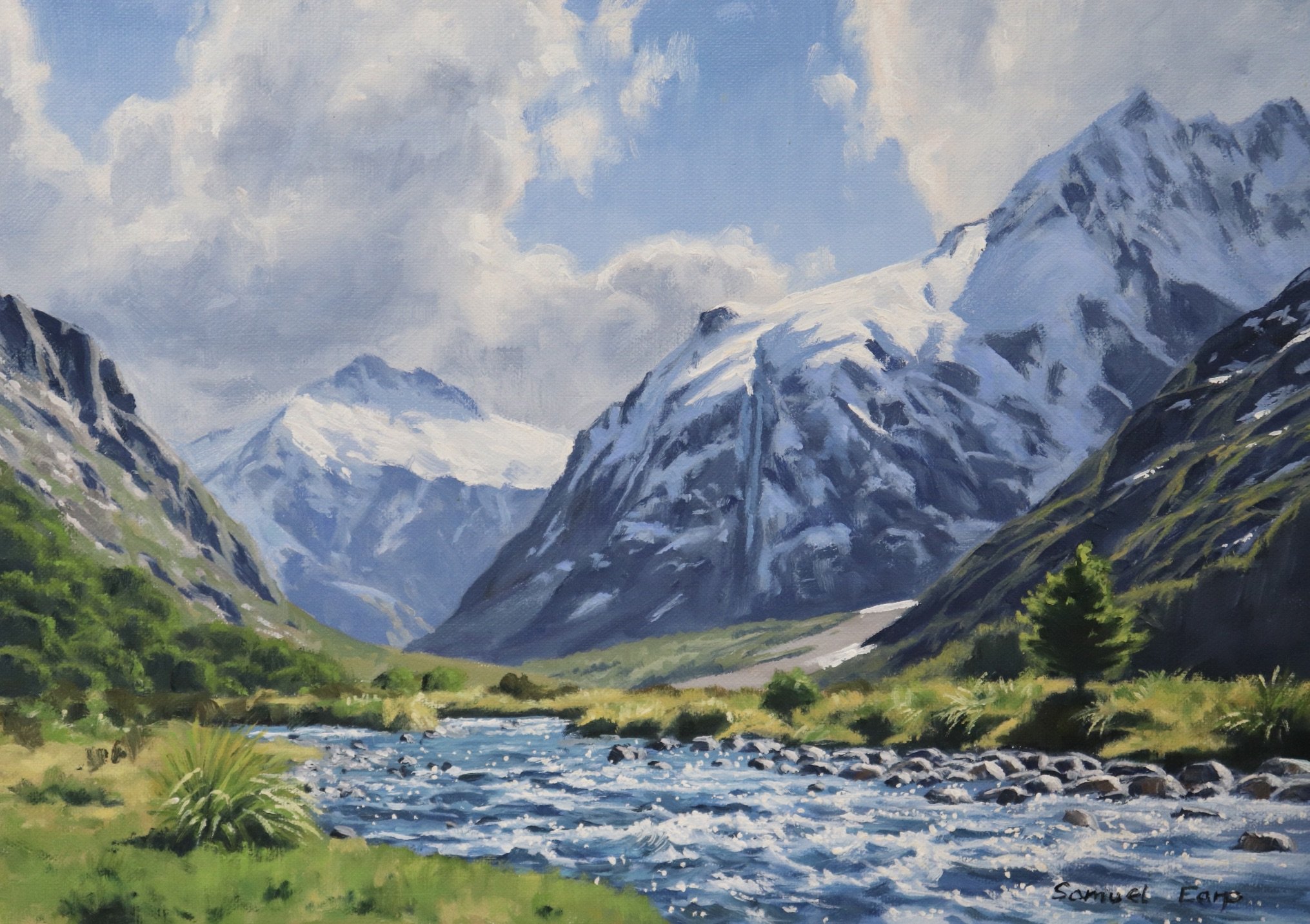
If you are new to painting landscapes then painting mountains is a good subject to paint as their bold forms are a great way to get your head around understanding colours and values in the landscape. In the blog post I will give you tips on painting mountains using my favourite mountain range in New Zealand as an example.
Tips For Beginners on Painting Mountains
Painting mountains is a great subject to paint especially if you are a beginner. With bold shapes, epic height and dramatic light, painting mountains are an excellent and interesting subject to paint. They are also great for helping new artists to get their head around values, colour saturation and atmospheric perspective and depth.
Composition
In this example Mount Talbot is the focal area and the painting. Whilst this landscape naturally forms a good composition it’s often difficult to find a pleasing composition out in nature and so some adjustments will be required.
It’s perfectly ok to move objects, elements, forms in your painting in order to create a good composition and it’s nearly always required. Remember we are artists and we are creating a painting, not a photograph.
The mountain stream forms a vector that leads the eye towards Mount Talbot. Streams and rivers are also good for creating a sense of rhythm in a painting. I have painted the clouds so it leads the eye across towards Mount Crosscut which is the mountain in the mid-ground. The natural shape of the mountains helps to lead the eye back towards the stream and therefore back to the focal area.
The tree sapling on the right in the foreground helps to anchor the composition and give it a sense of perspective.

Things to Be Avoided in Composition
- Centred Horizon: This is bad composition as it results in the painting being halved for example half sky and half land and as a result forms a displeasing static within a painting. Either choose a low horizon or a higher horizon.
- Centred Objects: Areas of interest in the centre of your painting is a massive no no, it destroys any kind of rhythm and harmony within the composition.
- Equal Masses and Repetitive Shapes: This is a problem in composition as often you can create repetitive shapes and forms in your painting without realising it. It again leads to disharmony within the composition.
Planning Your Painting
The key to creating a successful painting is having a solid foundation. This can be achieved by some planning prior to starting your painting. I’d recommend spending some time planning your painting as you are much less likely to run into problems when carrying out the final art work.
There is nothing more frustration than getting halfway through a painting only to discover it’s not working because of a bad composition or a tonal dynamic that’s flat because what you saw in the landscape didn’t translate well in your painting.
Pencil Sketches
Whenever I have the intention of painting a large studio artwork I always begin by designing the composition in my sketchbook. I start with quick two to three-minute thumbnail sketches and when I have an idea for a painting I will do a final detailed sketch.
Have fun with this, your sketch doesn’t have to be perfect but it can be really exciting to quickly see what your final painting could look like.

Paint a Colour Study
When painting a large art work it can be helpful to paint a small colour study first. A colour study is literally a small painting and a small version of your final art work.
Colour studies are particularly useful as you can paint them quickly and it will give you an idea of whether your large final painting is going to work. You may also spot something when doing a colour study which might need changing for the final painting, in which case it’s a lot easier to change things on small paintings.
Colours studies make great little paintings and you can sell them as well.
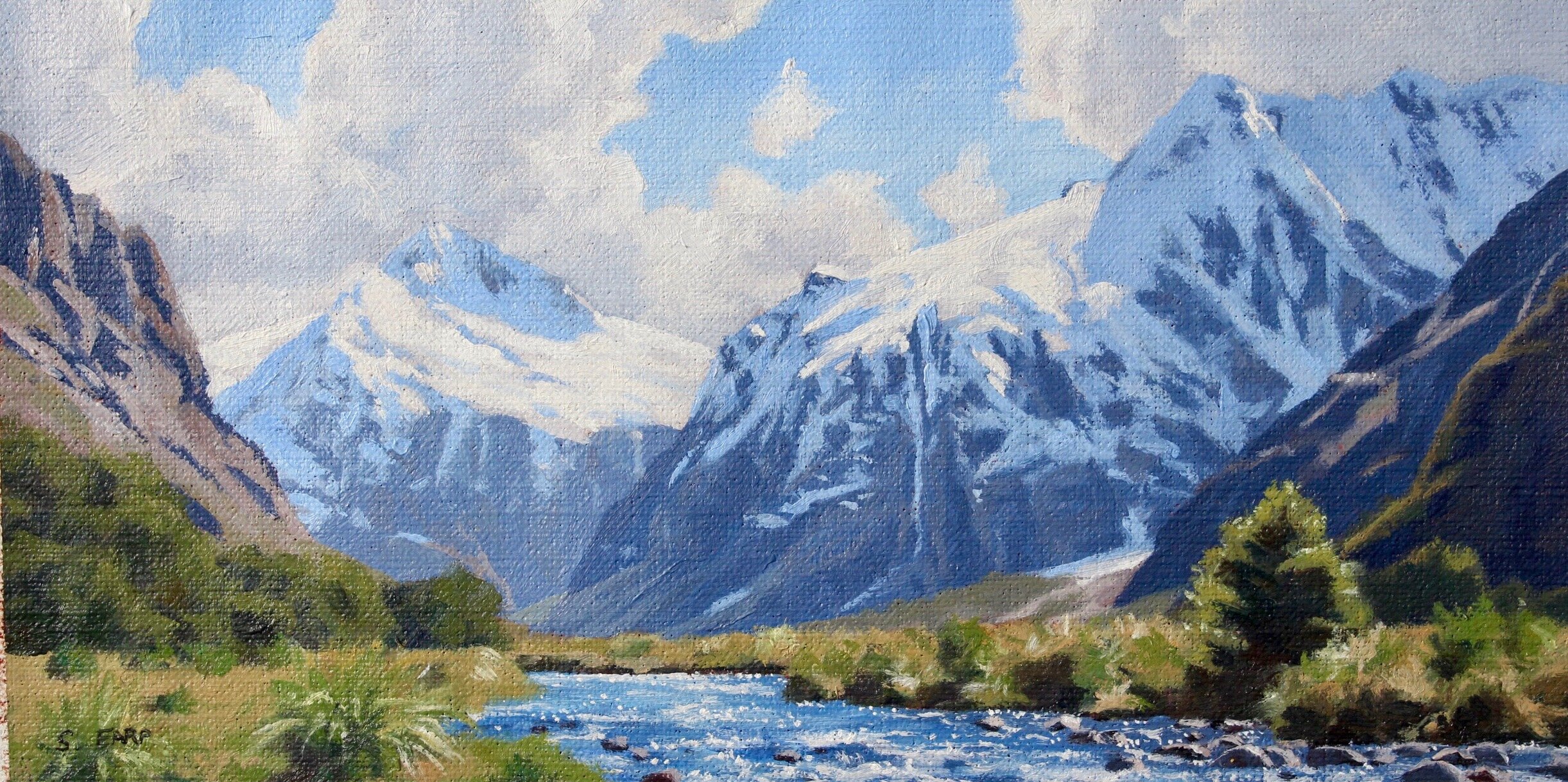
Painting Demonstration
The following painting demonstration is from a my most recent painting of this Fiordland mountain valley. The art work itself was painted on a 50cm x 100cm linen stretcher.
Blocking-In the Painting
I consider the blocking-in stage of the painting one of the most important parts of the painting process. It’s here that you want to make sure that the relationships between your colours and values are working.
When I block-in a painting I find it’s easiest to paint the shadows and dark values first. By doing so you’ll find it easier to create atmospheric depth in your paintings. You’ll also find it easier to get the tone and saturation of your colours correct when you paint areas that are in light.
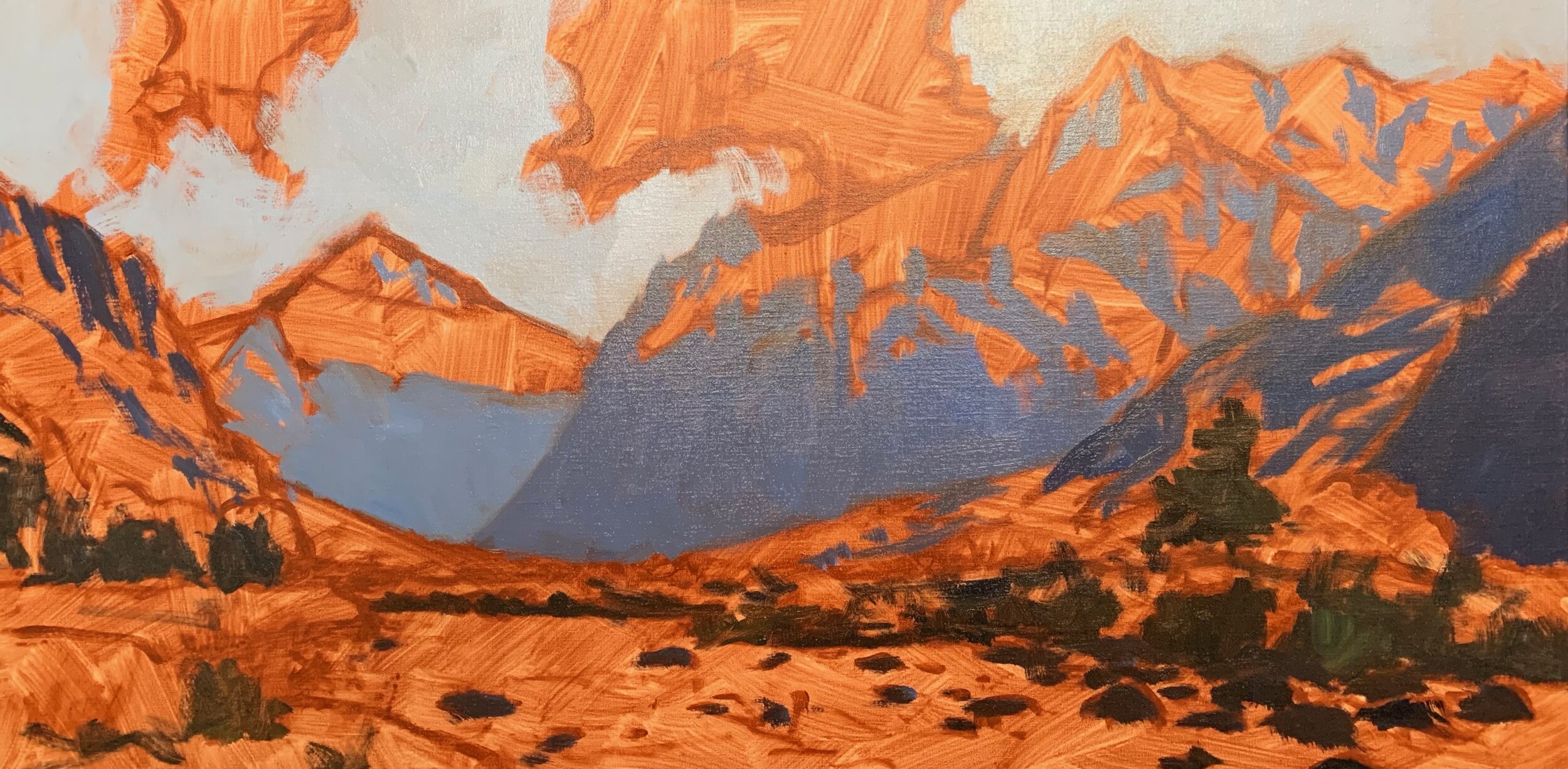
If I can I generally try and block-in the painting in one go. I also use big brushes so I can cover ground quickly and achieve a more painterly effect. Make sure you keep your values a little darker so you have plenty of room for adding lighter tones later on in the painting.

Adding the Details
Once your painting is blocked-in and you’ve allowed it to dry you can start the modelling stage and adding the detail. At this stage I still try and use big brushes but I can start using smaller one if required.
I also still want to keep my colours and values a little darker so I still have room to move. It’s here that you are creating a solid base to add the final details at the end of the painting.

Refining the Painting and Final Details
Once you have the majority of the details in place and you are happy with the colours and tonal dynamic of the painting you can start tidying up areas of the painting to make sure that it reads well. Once this process is complete then you can start adding those finer details such as highlights in the tree foliage or reflected light in the snow shadows for example. This is where you’ll need your smaller brushes.
I always save my lightest values until the end of the painting so the very last thing I add is highlights to the snow on the mountain and the sparkles in the water.
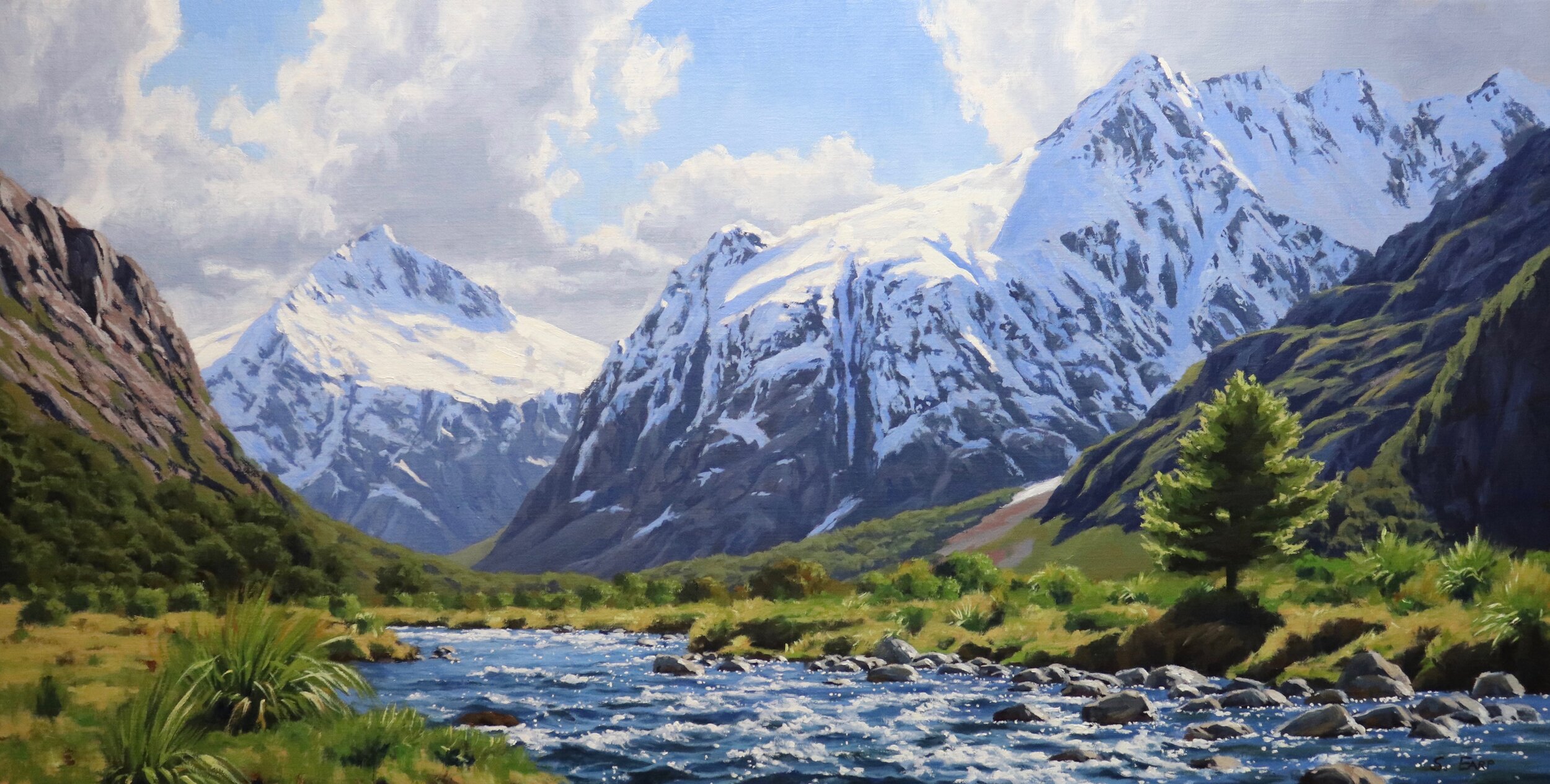
Why I love Painting Mountains
I love painting landscapes and I especially love to paint mountains! Mountains are intimidating but so beautiful that they invoke a sense of awe and reverence within me, so much so that I love to paint them.
I love painting mountains for the same reason that I love capturing nature’s beauty in my art works but I also love creating drama and tension in some of my paintings in a manner that is unsettling, but in a good way. When painting mountains I love to create the sense of grandiose forms and great height, danger and immense beauty.
There is an indefinable power that defies all proof within these beautiful landscapes of the world and I am constantly striving to capture that feeling on canvas.
My Favourite Mountain View to Paint
I love painting mountains regardless of the location but there is one special place for me with an amazing mountain view and it’s located in Fiordland National Park in southern New Zealand.
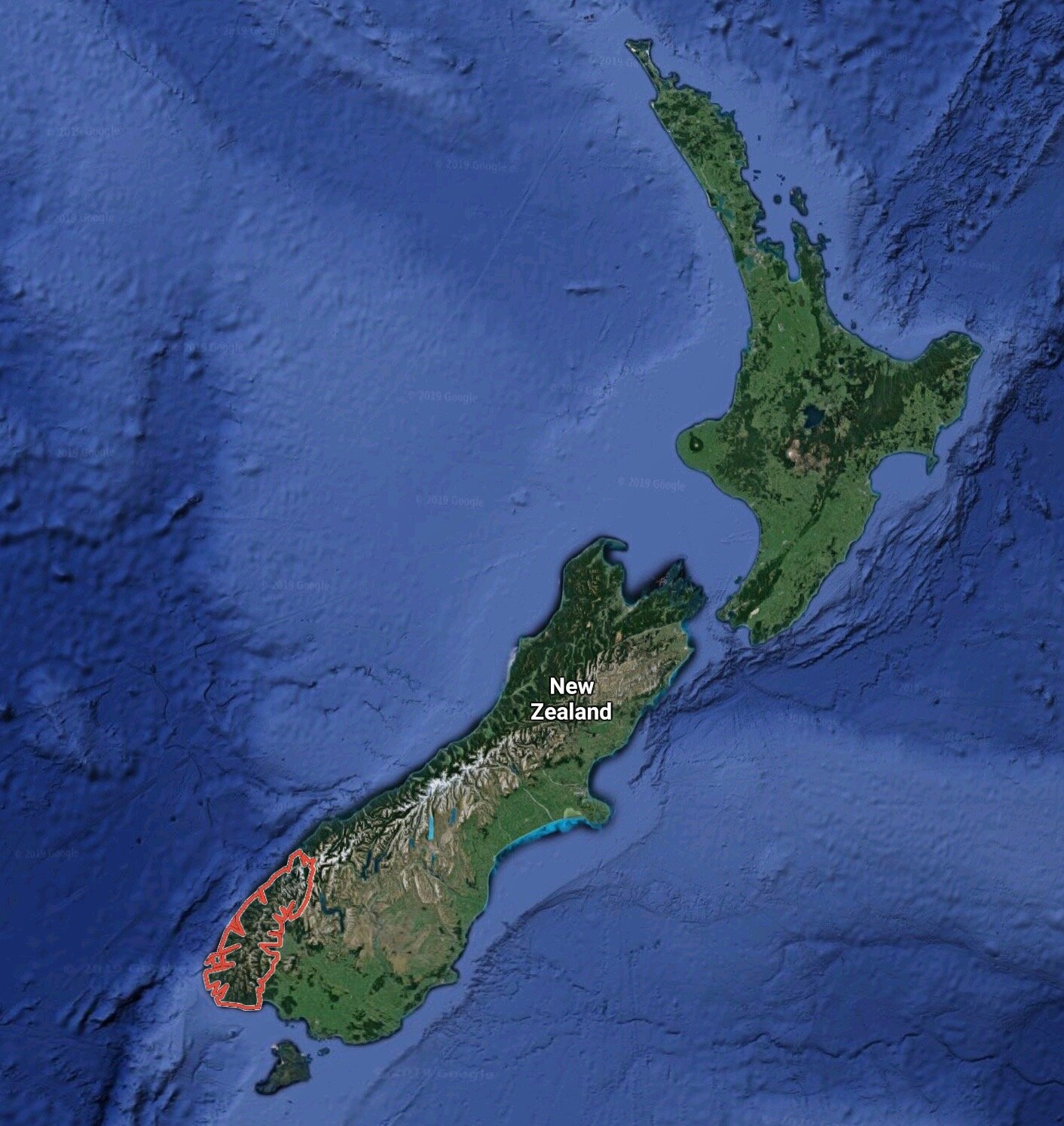
Fiordland National Park
Fiordland National Park is an area of outstanding natural beauty and characterised by high mountains, ice-carved fiords, southern beech tree forests, lakes, valleys and breathtaking views. It is an area I have visited many times. I have painted outdoors en plein air there and I have taken many photos.
Within this sublime area of natural beauty is a mountain valley that is so captivating that I have felt compelled to paint it many times. This mountain valley feature two prominent mountains called Mount Talbot and next to it is another mountain called Mount Crosscut.
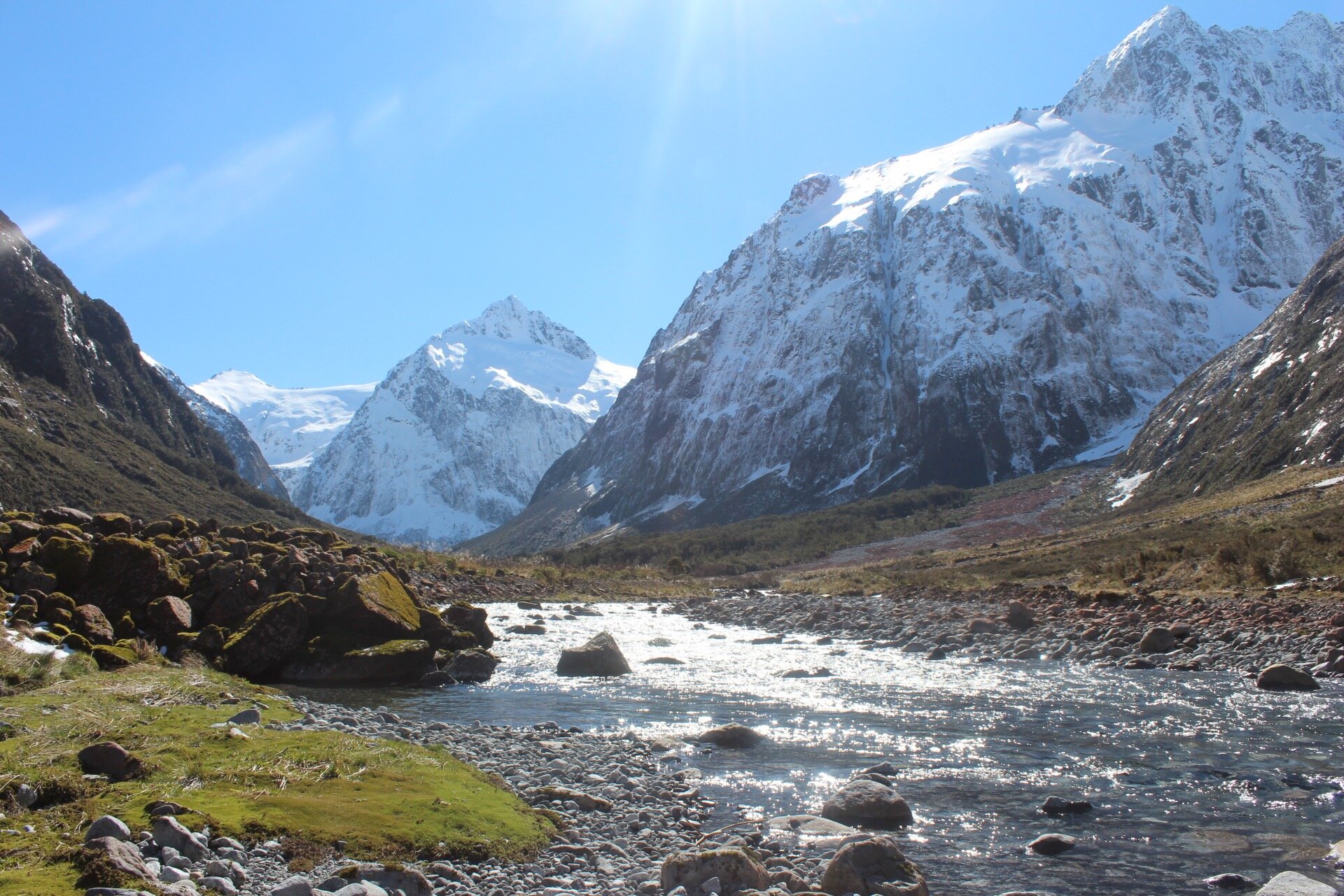
The valley where these two mountains are situated forms a naturally pleasing composition. As you can see in the above photo the mountain stream leads towards Mount Talbot adding rhythm to whole scene.
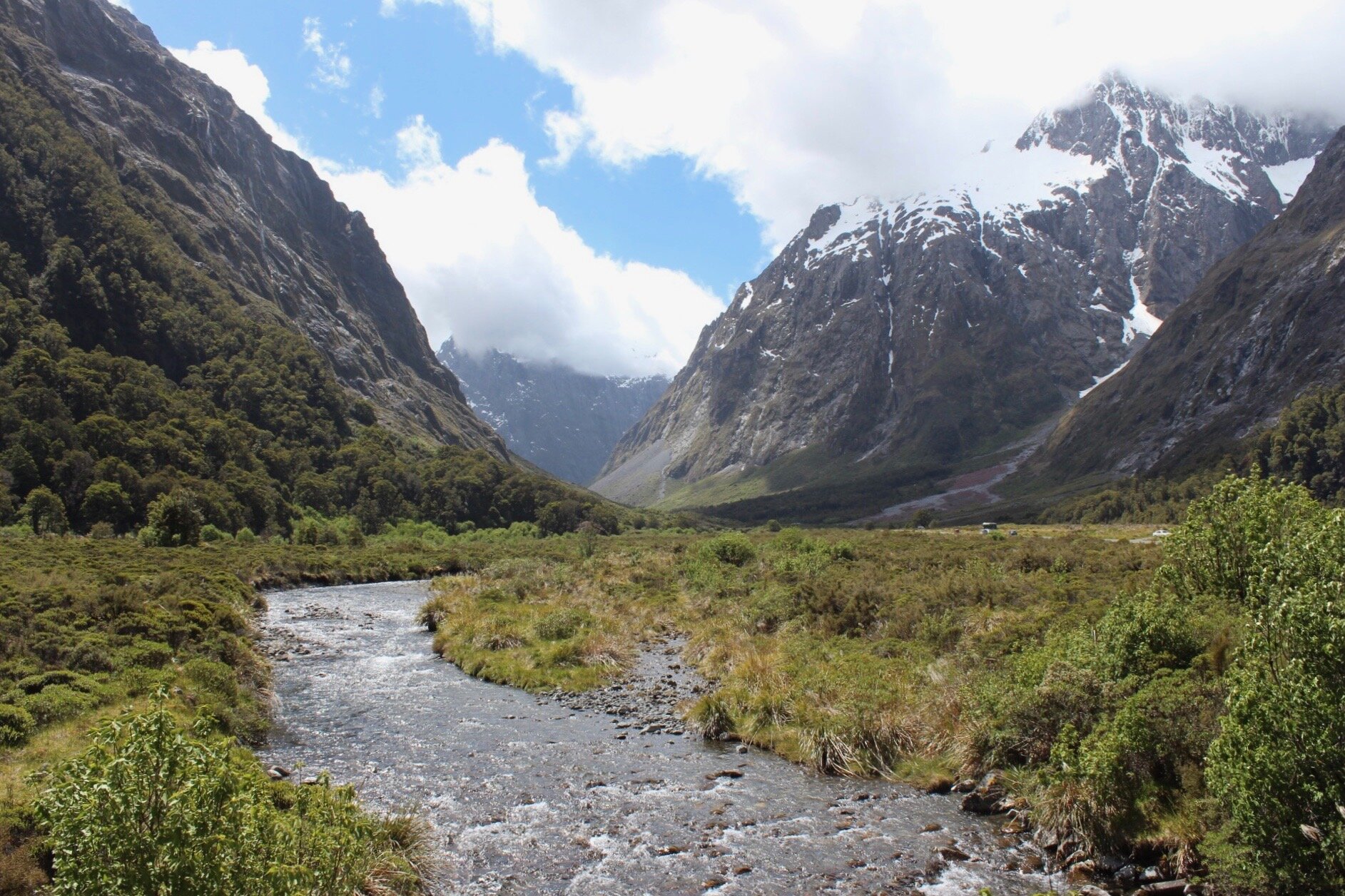
The changeable weather, lighting dynamic and lush foliage makes this mountain valley so interesting to paint.
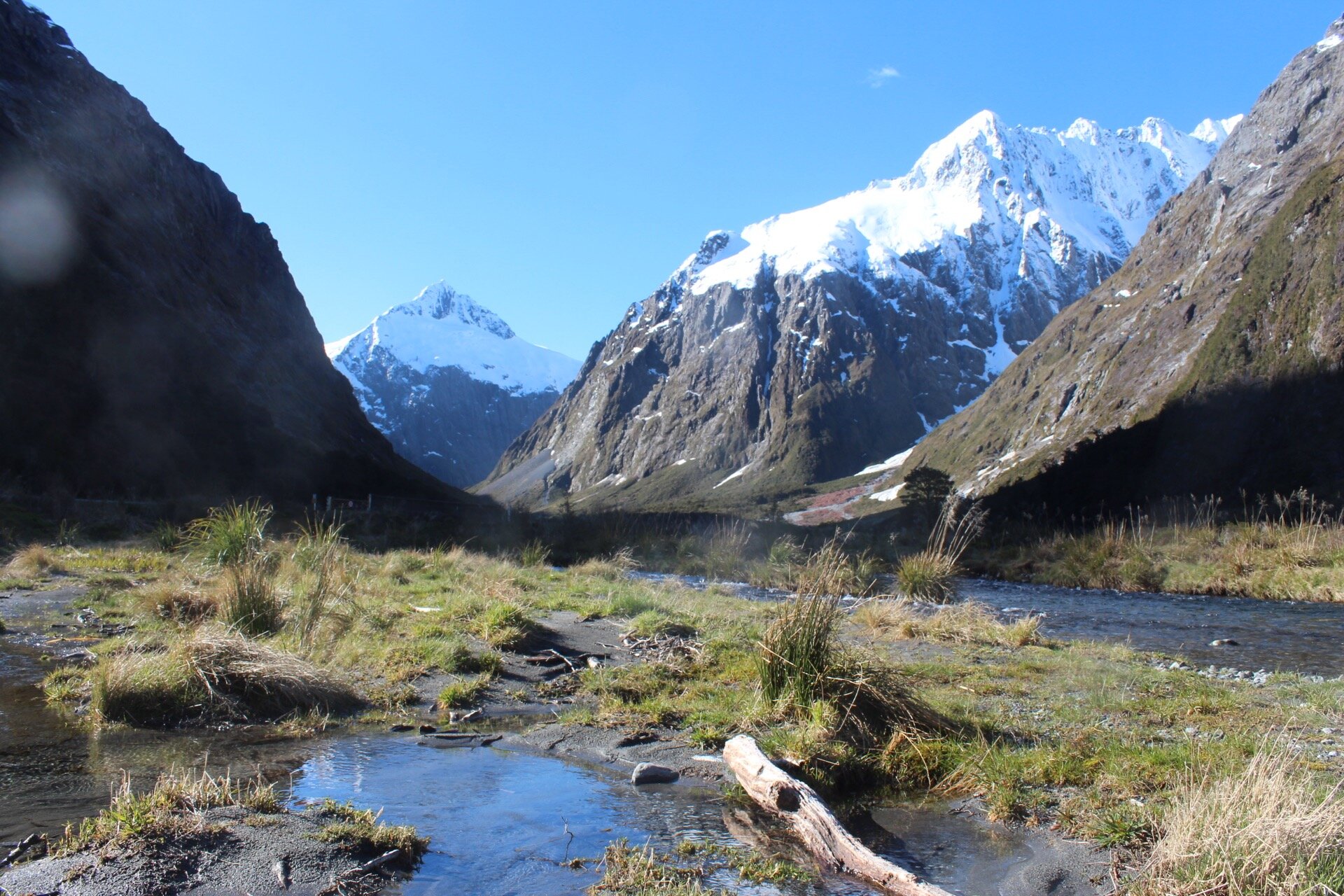
A Painted Mountain Valley
I have visited this location many times on of several of those occasions I painted this view outdoors en plein air. Here are a couple of my plein air paintings.
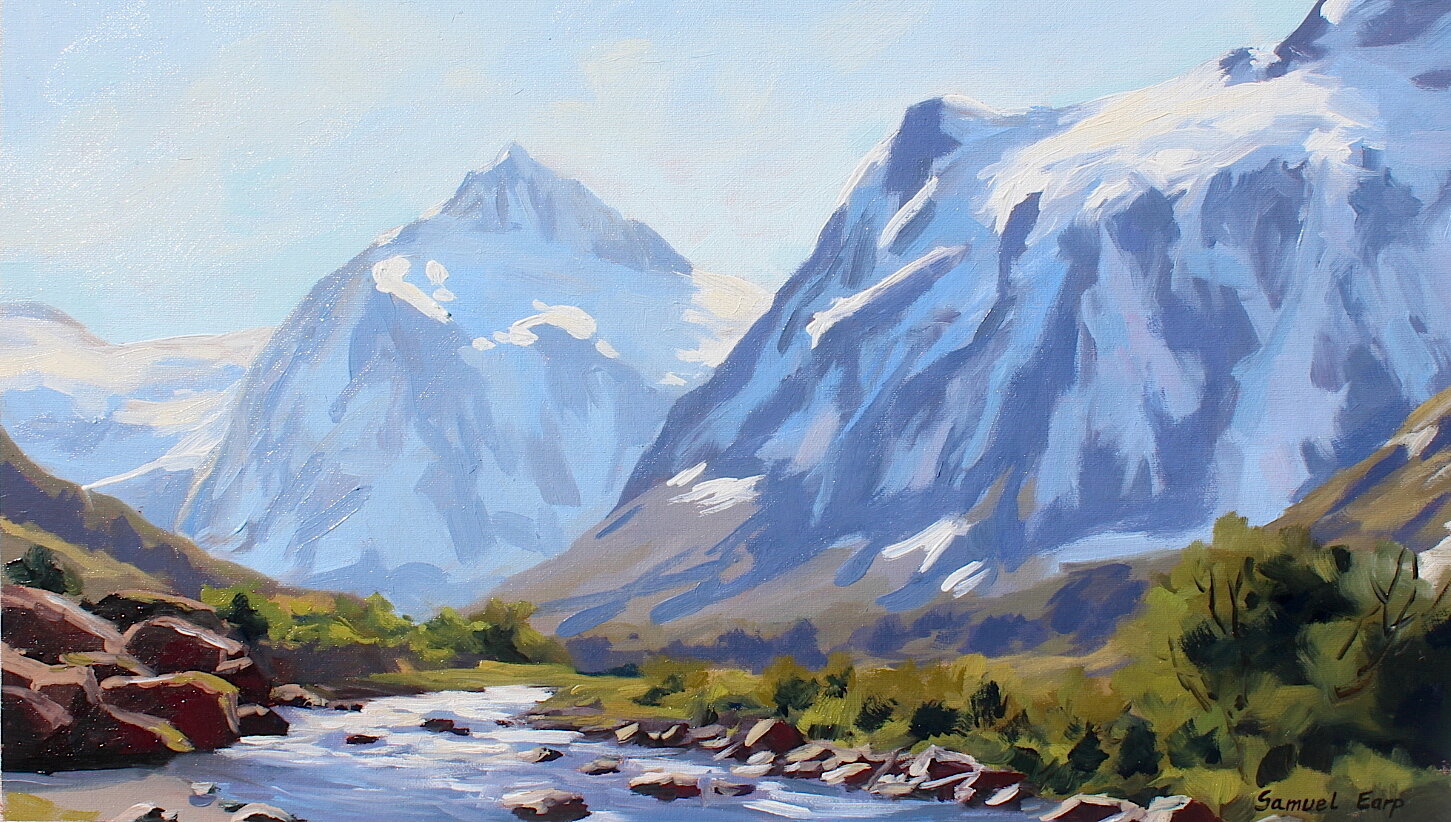
I painted the above art work outdoors in 2016 using loose brush work.
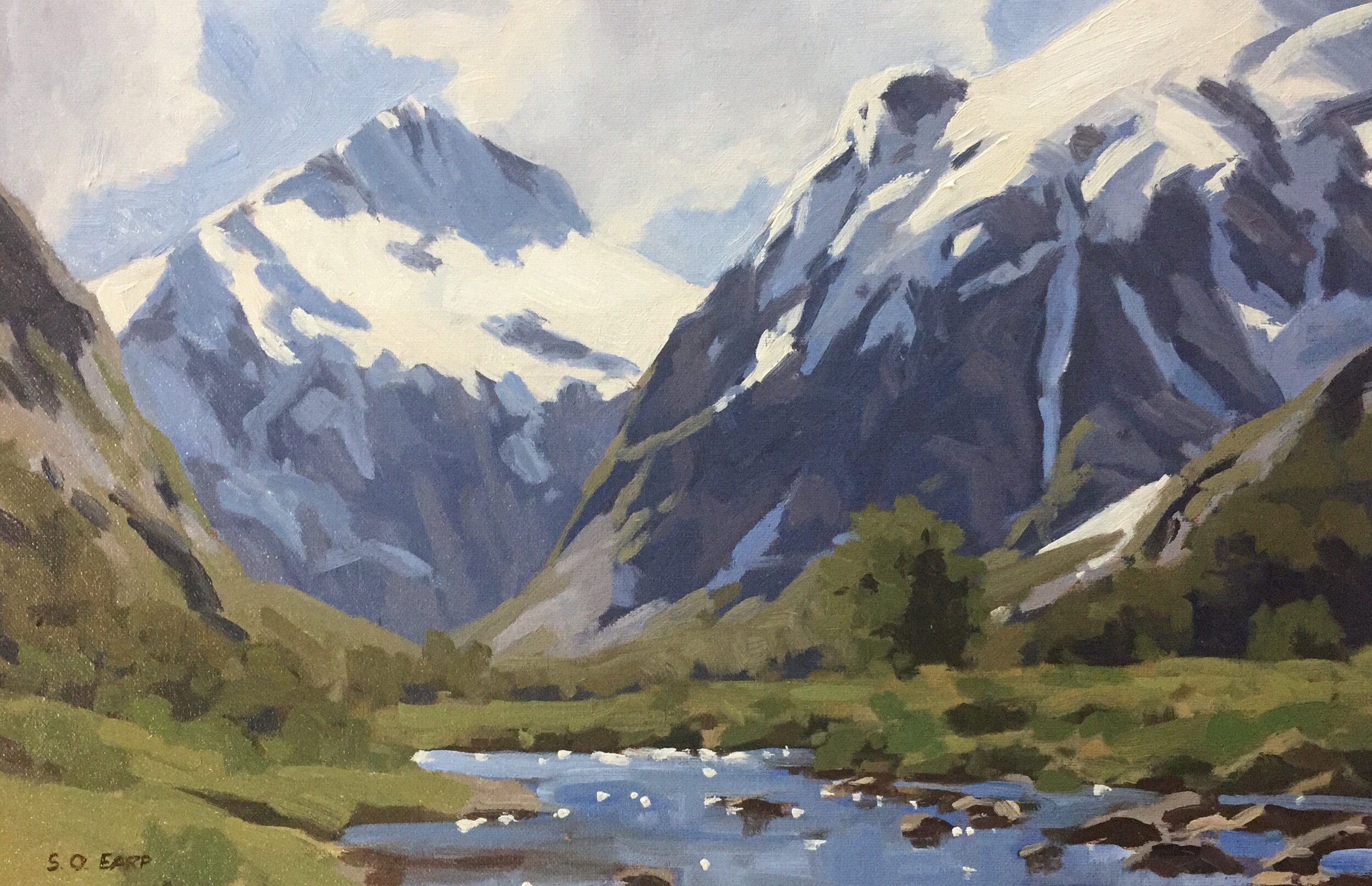
This one I painted in 2018, again using loose brushwork.
Studio Paintings
My field paintings and photo reference have inspired many studio paintings of this mountain valley.
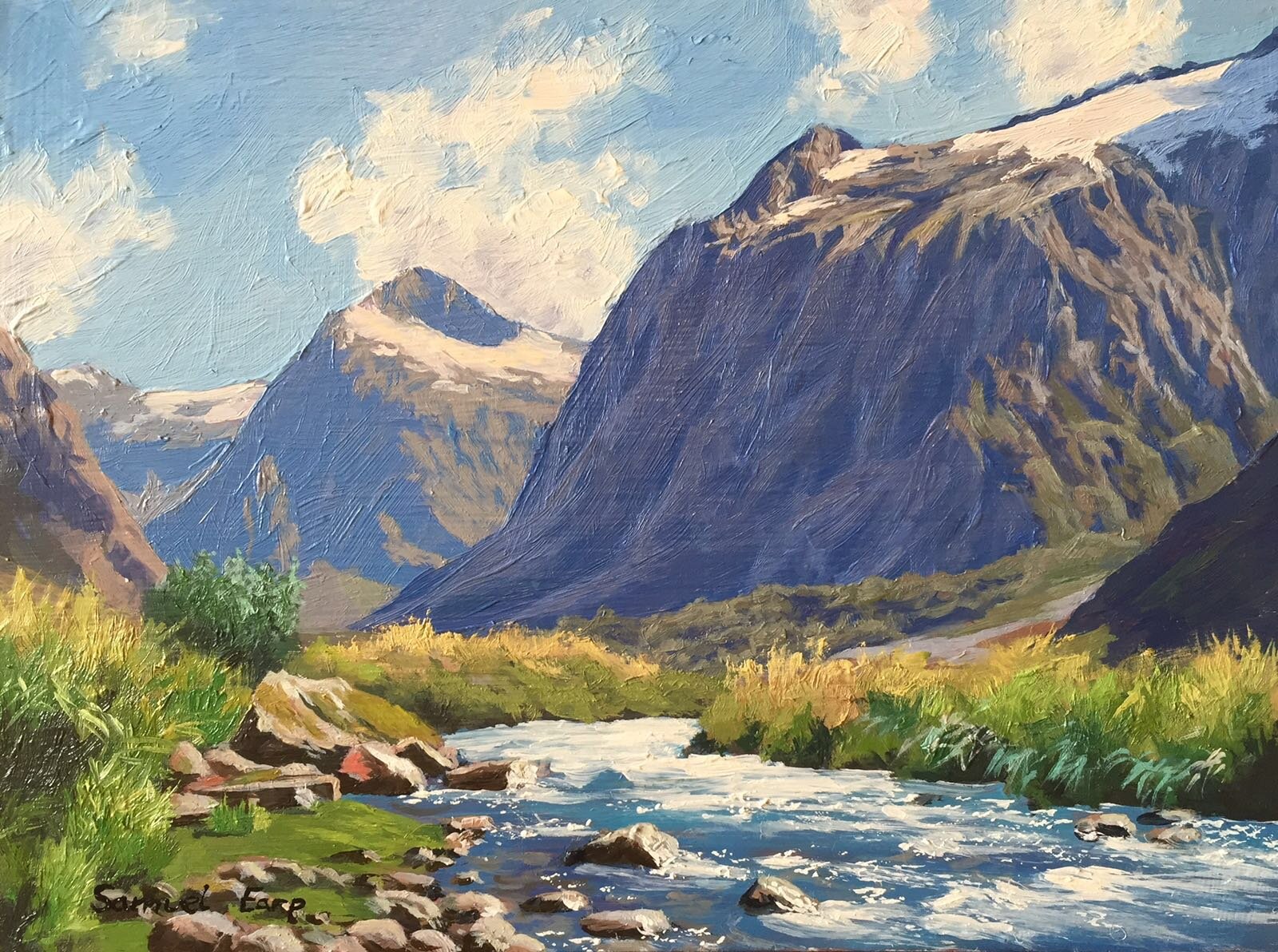
This is a small painting on a wooden panel which I painted in 2016.
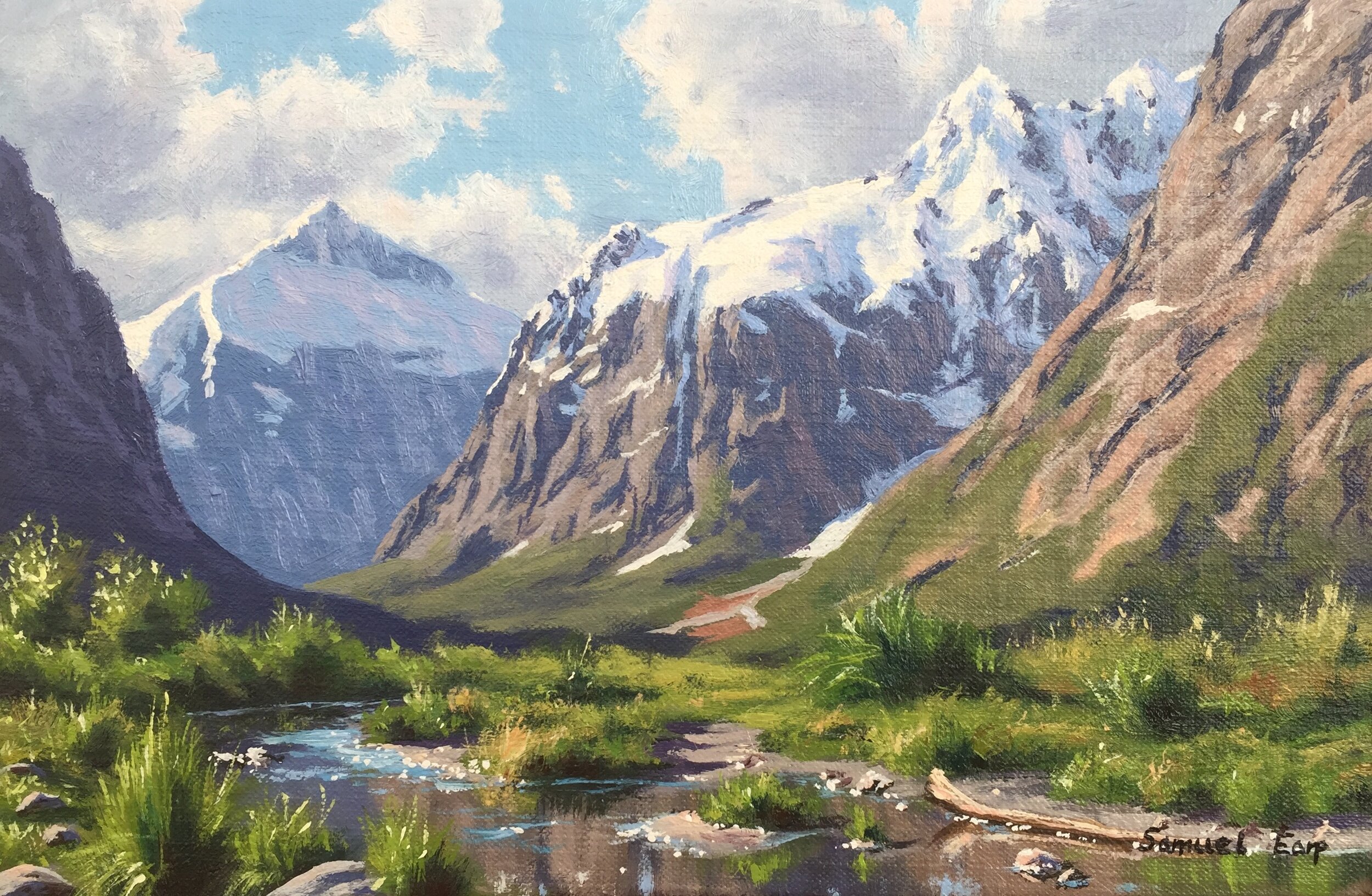
This small art work was painted in 2017 and it inspired a larger studio painting.
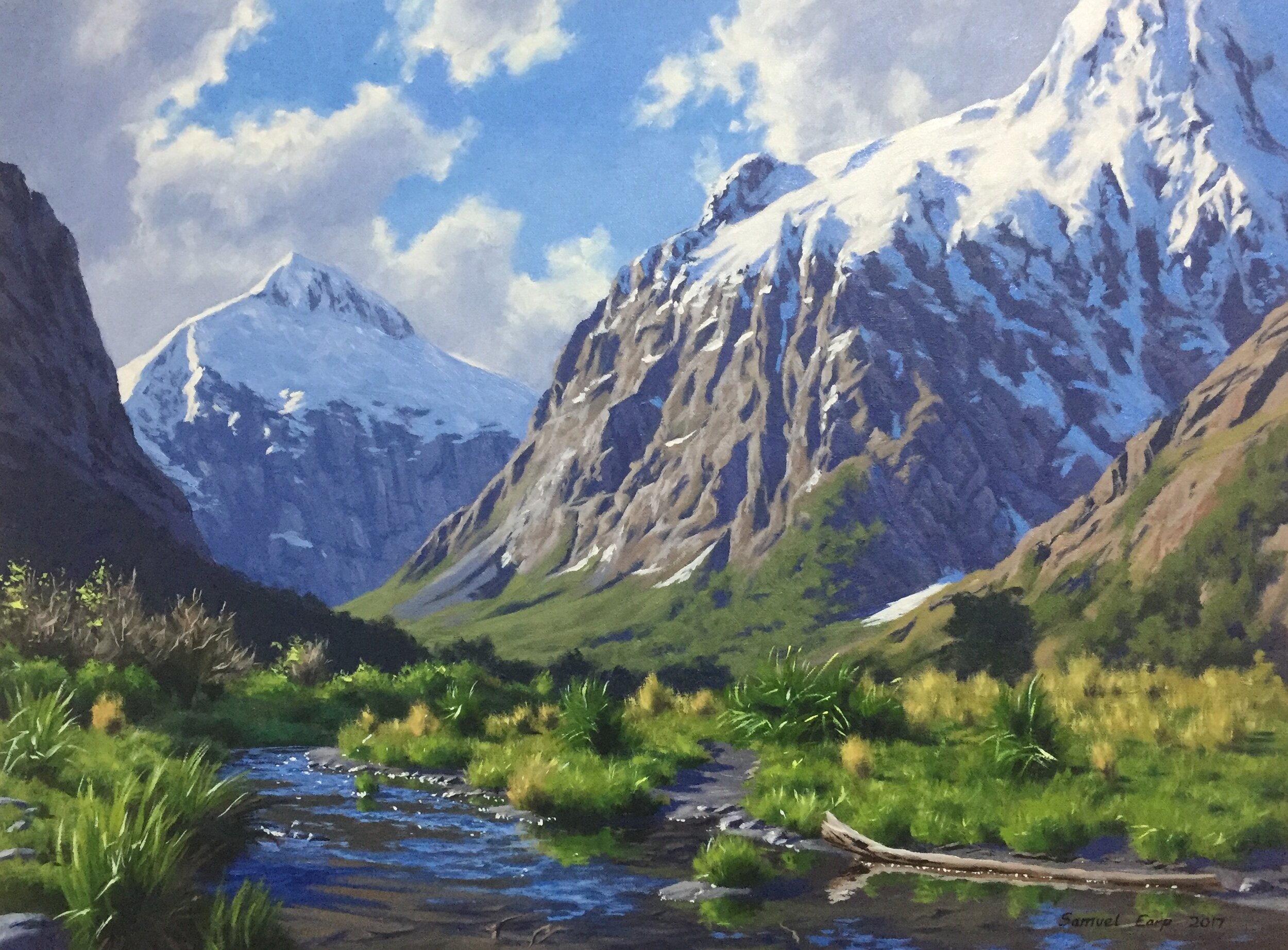
Thanks for reading 😊
